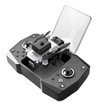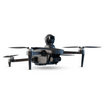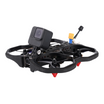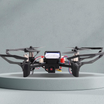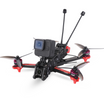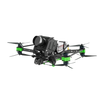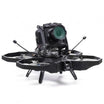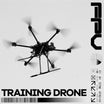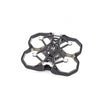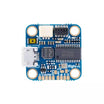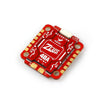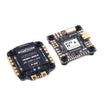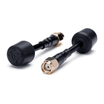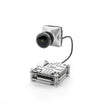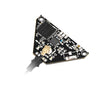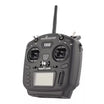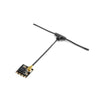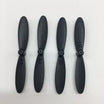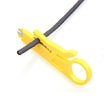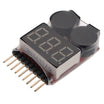In the vast expanse of India, where agriculture is not just a livelihood but a way of life for millions, the integration of technology has ushered in a new era. One such technological advancement that has been making waves in the agriculture landscape is the use of drones in agricultural practices.
These unmanned aerial vehicles are not only changing the face of farming; they are transforming it by offering more efficiency, precision, and sustainability. As we explore the intricate background of Indian agriculture, we see how drones are becoming crucial tools, surpassing traditional farming practices and paving the path for a more sustainable and productive future.
The Agricultural Landscape in India:
India stands poised for an agriculture revolution driven by drones. Rapid technology improvements across imaging, analytics and autonomy now bring sophisticated data-driven crop management and precision spraying solutions within reach for millions of farmers today. UAV platforms promise to alleviate major pain points that have chronically constrained yields, damaged harvests and suppressed farm incomes across regions.
In this post we’ll explore some of the biggest historical challenges in Indian agriculture and how drones uniquely address underlying issues through aerial intelligence gathering and targeted chemical application enhancements. We’ll also consider real world implementations, cost-benefit tradeoffs and what nationwide scale adoption could achieve for rural prosperity and food security priorities overall.
Perennial Farming Challenges in India
Small landholding farmers power the livelihoods of over 50% of Indian households today directly through cultivation or subsidiary trades supporting regional yields. Yet myriad issues plague consistent, optimal harvests:
-
Labor Intensive Scouting - Limited windows exist catching infections before entire fields require treatment. Spotting early signs of blight visually amid vast acreages proves extremely difficult and back breaking.
-
Inefficient Spraying – Uniform blanket spraying of entire plots is imprecise and wasteful whether by hand pumps or towed equipment. Analysing foliage pixel by pixel would allow ultra targeted application only where required.
-
Water Mismanagement - Inefficient flood irrigation still dominates wasting enormous volumes as crops utilise barely half resources pulled from declining aquifers. Optimising moisture precisely across different plots is rare.
-
Inaccessible Farmland - Rugged or flooded terrain makes assessing and treating crops effectively almost impossible without extensive manual effort.
- Limited Operation Windows - Farmers race against tight seasonal deadlines around planting, pest management and harvesting. Delayed action due to above issues easily destroys entire revenue streams.
These interwoven agricultural challenges badly need innovative disruption. Next let's see how drones offer high tech solutions promising vastly increased yields and dramatically improved farmer prosperity.
The Rise of Agriculture Drones:
The introduction of agriculture drones in India represents a considerable shift from traditional farming practices. These drones, which are equipped with modern sensors and imaging technologies, provide farmers with real-time information and actionable insights. Various startups in the drone industry understand the transformational influence that these drones may have on Indian agriculture and seek to shine light on the numerous benefits they can provide to the farming community.
The Benefits of Drones in Agriculture:
- Precision agriculture - Enhancing efficiency and yield:
One of the key benefits of agricultural drones is their potential to enable precision agriculture. These drones, equipped with high-resolution cameras and sensors, take precise photos of the farmland. This information is then processed to determine crop health, identify pests and diseases, and track soil conditions. Farmers can utilise this information to make informed decisions about water, fertilizers, and pesticides.
A drone survey, for example, may identify exact parts of a field that need more irrigation or highlight areas with nutritional deficiencies. This targeted approach not only maximises resource efficiency but also reduces environmental effect, in line with sustainable farming methods.
- Tackling Challenges with Data-Driven Insights:
In a place where unexpected weather can wreak havoc on crops, timely data collection is critical. Agriculture drones provide real-time insights into weather patterns and potential crop risks, making them a proactive option. This early warning system enables farmers to take preventative measures that reduce the impact of adverse weather on the productivity of farms.
Furthermore, the data obtained by drones helps farmers organise their planting and harvesting schedules more efficiently. Farmers that understand their crops' growth stages can optimise the timing of these actions, resulting in higher agricultural yields and financial returns.
- Sustainability and Environmental Stewardship:
Agriculture drones not only improve efficiency and productivity, but also promote sustainable farming practices. The precise application of inputs, enabled by drone technology, reduces the environmental impact of farming activities. Reduced usage of water, fertilisers, and pesticides lowers production costs while simultaneously reducing agriculture's environmental footprint.
Furthermore, drones help to monitor deforestation, illegal logging, and land degradation. They become crucial conservation tools because they provide a bird's-eye view of broad areas, helping to preserve biodiversity and natural resources.
- Cost Savings:
The integration of drones into agriculture results in a paradigm shift in cost-cutting strategies. Drones are drivers for economic efficiency in farming, from precise input application and effective irrigation to increased time efficiency and decision-making. As technology advances, the cost-saving benefits of drones are expected to increase, giving farmers long-term and economically feasible solutions to the challenges that they confront in the modern agricultural landscape.
Some of the major usage of drones in agriculture are:
- Monitoring large farms spanning miles is labour intensive. Drones with 4K cameras allow farmers to easily survey entire properties from the comfort of their homes with real-time aerial views up to 20km away.
- Spotting irrigation issues or soil variation patterns is extremely difficult on the ground. Multispectral drone sensors can instantly identify overwatered and nutrient deficient areas for correction early using prescription maps.
- Early disease or pest infestation detection requires endless walking to visually inspect plants. Drones automate scanning massive crop rows using machine learning to model and highlight distressed foliage precisely for prompt treatment.
- Assessing crop yields accurately takes extensive manual sampling and calculations. Autonomous drone fleets generate detailed crop volumetric estimates down to cubic metre precision using sophisticated algorithms informed by visual data capture across fields.
- Applying chemicals uniformly by traditional equipment or labour is imprecise and wasteful. Drones enable precise spray doses deployed based on foliage scans recognizing areas in need vs healthy regions. This saves money and the environment.
InsideFPV's Krishi Drone : Revolutionising precision agriculture.
InsideFPV introduced Krishi, an innovative drone meant to transform precision agriculture. Krishi is committed to changing agricultural practices, owing to its revolutionary features and commitment to meeting farmers' specific demands. Following are the highlights of the Krishi drone:
- Fully Autonomous Operations:
Krishi functions completely autonomously, offering farmers a hassle-free solution for sprinkling pesticides, insecticides, and irrigation. This independence ensures that the drone efficiently covers the targeted area while requiring minimal manual involvement, thus making it easy to fly without so much effort from the farmer's side to understand technical aspects of drones.
- High efficiency.
Krishi is designed for maximum efficiency and can cover 2-3 acres in a single flight. This outstanding efficacy not only saves time but also improves the overall effectiveness of crop management and irrigation systems, resulting in higher yields.
- Outstanding capacity:
Krishi has a significant 10-litre capacity, which allows for extended use without the need for regular refills. This function means that the drone can cover a large area before requiring additional inputs, making it convenient for farmers.
- Gujarat Government Subsidies:
Recognizing the importance of drones in agricultural practices, the Gujarat government is providing a substantial 50% price subsidy on Krishi drones. This effort intends to make modern technology more available to farmers, thereby encouraging sustainable and efficient farming techniques.
- Affordable pricing:
InsideFPV strives to offer Krishi at reasonable costs in contrast to its competitors. This competitive pricing strategy demonstrates our commitment to making transformative agricultural technology available to a wider spectrum of farmers, regardless of the size of operation.
- Terrain-following radar and obstacle avoidance:
Krishi is equipped with innovative terrain-following radar and obstacle-avoidance technology. This allows the drone to navigate the landscape with precision, avoiding obstacles in its route. The end result is a safer and more reliable operation that reduces the risk of accidents while improving overall efficiency.
The Future of Indian Agriculture: A Collaborative Approach:
As we navigate the future of Indian agriculture, it becomes evident that the successful integration of drone technology requires collaboration among various stakeholders. Government bodies, private enterprises, research institutions, and farmers must join hands to create a supportive ecosystem for the widespread adoption of agriculture drones.
InsideFPV advocates for initiatives that aids the use of drone technology in agriculture. They are committed to making it more accessible for farmers across the country. This collaborative approach is not just about selling drones but fostering a sustainable agricultural revolution.
InsideFPV believes that Krishi is not just a drone; it is a solution crafted to address the unique challenges faced by Indian farmers. By combining autonomy, efficiency, affordability, and cutting-edge technology, Krishi stands as a testament to their commitment to empower farmers and contribute to the advancement of precision agriculture in India. InsideFPV remains dedicated to driving positive change in the agricultural landscape, one innovative solution at a time.
FAQs
- What challenges does Indian agriculture face that require innovative solutions like drones?
Indian agriculture faces challenges such as labour-intensive scouting, inefficient spraying, water mismanagement, inaccessible farmland, and limited operation windows. Drones offer high-tech solutions to address these issues through aerial intelligence gathering and targeted chemical application enhancements.
2. How do agriculture drones benefit farmers in India?
Agriculture drones provide real-time information and actionable insights to farmers. They enable precision agriculture by offering detailed data on crop health, identifying pests and diseases, and tracking soil conditions. Drones also help in tackling challenges related to water management, inaccessible farmland, and time constraints during planting and harvesting.
3. How do drones enable precision agriculture?
Drones equipped with high-resolution cameras and sensors can capture detailed data on crop health, pests, soil conditions etc. This data allows farmers to apply water, fertilisers and pesticides only where and when needed based on precise insights.

